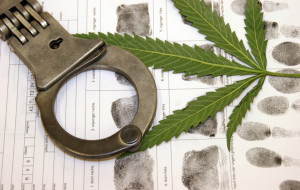It has been a long and tumultuous road to legalization of marijuana in California. Through the years, there have been a number of significant developments in the legislative, legal, and cultural fronts with regard to marijuana possession, use, and cultivation.
The Medical Marijuana Program
 California was the first state to implement a medical marijuana program. This program was the result of two legislative measures: Proposition 215 and Senate Bill 420, which were passed in 1996 and 2003 respectively. Proposition 215 or the Compassionate Use Act, was passed on the strength of a 55% majority vote. This measure essentially gave certain individuals the legal right to cultivate or purchase marijuana for medical reasons upon the recommendation of a physician. The law is intended to benefit patients with cancer, AIDS and other chronic health conditions. Senate Bill 420 (also known as the Medical Marijuana Protection Act) for its part was implemented impermeable to institute a medical marijuana ID card system. This measure was passed by Governor Gray Davis.
California was the first state to implement a medical marijuana program. This program was the result of two legislative measures: Proposition 215 and Senate Bill 420, which were passed in 1996 and 2003 respectively. Proposition 215 or the Compassionate Use Act, was passed on the strength of a 55% majority vote. This measure essentially gave certain individuals the legal right to cultivate or purchase marijuana for medical reasons upon the recommendation of a physician. The law is intended to benefit patients with cancer, AIDS and other chronic health conditions. Senate Bill 420 (also known as the Medical Marijuana Protection Act) for its part was implemented impermeable to institute a medical marijuana ID card system. This measure was passed by Governor Gray Davis.
Decriminalization of the Possession of Marijuana
A significant step forward toward the legalization of marijuana occurred in July 1975, when the possession of small amounts of marijuana was decriminalized with the passing of Senate Bill 95. This bill essentially rendered the possession of 28.5 grams of marijuana or less a civil offense rather than a criminal one. The offense merits only a $100 fine, although the fine assessments added in the state of California places the total closer to $480. Offenses involving possession of larger amounts, possession on school property or for purposes of cultivation merit higher penalties. To this day, the possession of small amounts of marijuana is still decriminalized in California.
The Substance Abuse and Crime Prevention Act (Proposition 36)
 Another significant development in the history of marijuana legalization in California was the passage of Proposition 36 of 2000. Known as the Substance Abuse and Crime Prevention Act, this law essentially gave first – and second – offense violators the opportunity to seek drug treatment instead of being subjected to a trial and a possible prison term.
Another significant development in the history of marijuana legalization in California was the passage of Proposition 36 of 2000. Known as the Substance Abuse and Crime Prevention Act, this law essentially gave first – and second – offense violators the opportunity to seek drug treatment instead of being subjected to a trial and a possible prison term.
The Marijuana Control, Regulation, and Education Act
In 2009, the Marijuana Control, Regulation, and Education Act was introduced by Tom Ammiano. This law essentially lifted state penalties for marijuana possession, use, and cultivation for individuals over 21 years of age. With the approval of the bill by the Assembly Public Safety Committee in January 2010, the United States finally had a bill that effectively legalized marijuana pass through a legislative body. The bill was passed on the strength of a 4 to 3 vote. However, the Marijuana Control, Regulation, and Education Act was not approved in the Assembly. Ammiano intended to reintroduce the bill if Proposition 19 (the Regulate, Control and Tax Cannabis Act) was passed later in 2010. With the defeat of Proposition 19 in November 2010 however, the Marijuana Control, Regulation, and Education Act was not pursued.
Senate Bill 1449
September 2010 saw the passing of Senate Bill 1449 into law. Signed into law by Governor Arnold Schwarzenegger, the bill essentially reduced the possession of an ounce of marijuana to an infraction from its previous misdemeanor status. This offense does not warrant a criminal record, nor does it require a court appearance, involving only a $100 fine. Senate Bill 1449 took effect on January 1, 2011.
 California Marijuana Market Breaking "Marijuana News" from CA
California Marijuana Market Breaking "Marijuana News" from CA
